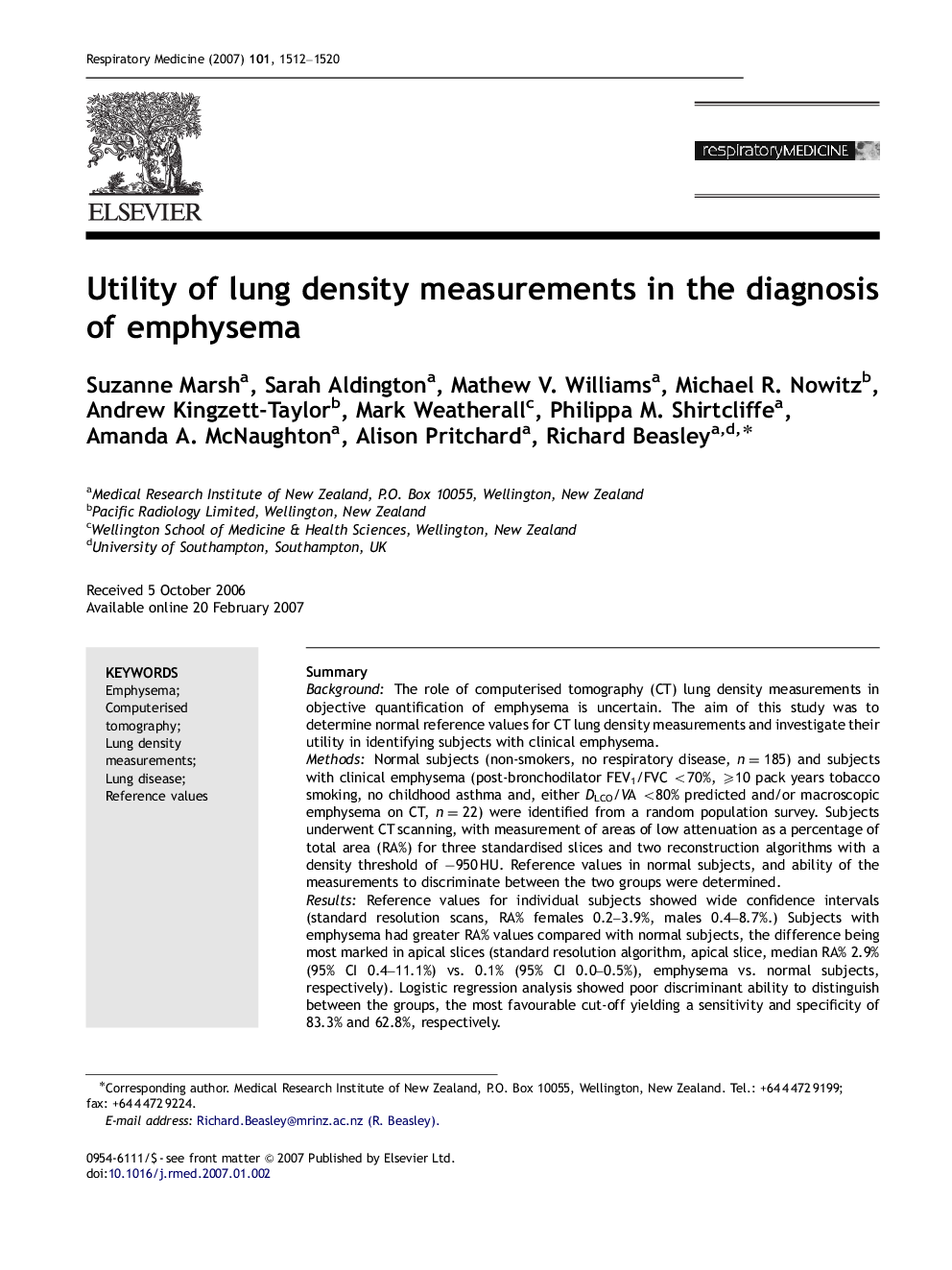| Article ID | Journal | Published Year | Pages | File Type |
|---|---|---|---|---|
| 4211708 | Respiratory Medicine | 2007 | 9 Pages |
SummaryBackgroundThe role of computerised tomography (CT) lung density measurements in objective quantification of emphysema is uncertain. The aim of this study was to determine normal reference values for CT lung density measurements and investigate their utility in identifying subjects with clinical emphysema.MethodsNormal subjects (non-smokers, no respiratory disease, n=185) and subjects with clinical emphysema (post-bronchodilator FEV1/FVC <70%, ⩾10 pack years tobacco smoking, no childhood asthma and, either DLCO/VA <80% predicted and/or macroscopic emphysema on CT, n=22) were identified from a random population survey. Subjects underwent CT scanning, with measurement of areas of low attenuation as a percentage of total area (RA%) for three standardised slices and two reconstruction algorithms with a density threshold of −950 HU. Reference values in normal subjects, and ability of the measurements to discriminate between the two groups were determined.ResultsReference values for individual subjects showed wide confidence intervals (standard resolution scans, RA% females 0.2–3.9%, males 0.4–8.7%.) Subjects with emphysema had greater RA% values compared with normal subjects, the difference being most marked in apical slices (standard resolution algorithm, apical slice, median RA% 2.9% (95% CI 0.4–11.1%) vs. 0.1% (95% CI 0.0–0.5%), emphysema vs. normal subjects, respectively). Logistic regression analysis showed poor discriminant ability to distinguish between the groups, the most favourable cut-off yielding a sensitivity and specificity of 83.3% and 62.8%, respectively.ConclusionsCT lung density measurements cannot reliably detect the presence of emphysema in an individual. We recommend further investigation into lung density measurements before their widespread use in clinical practice.
